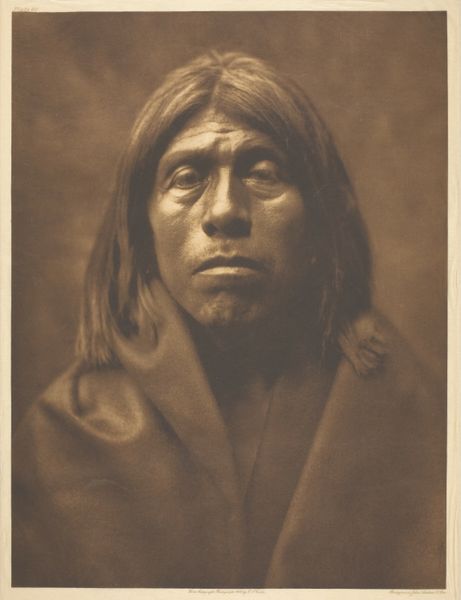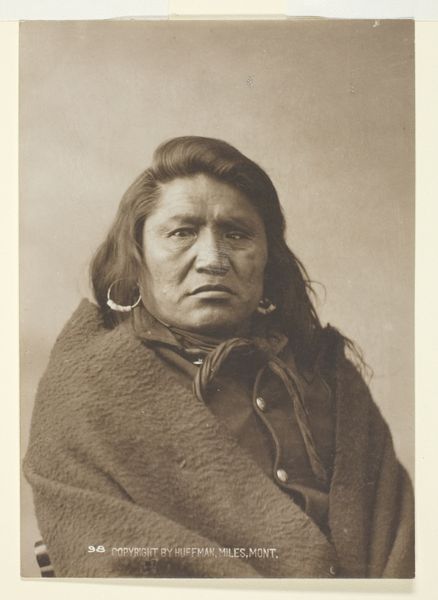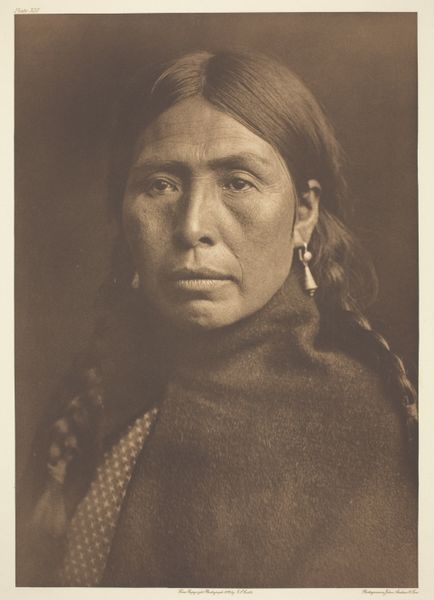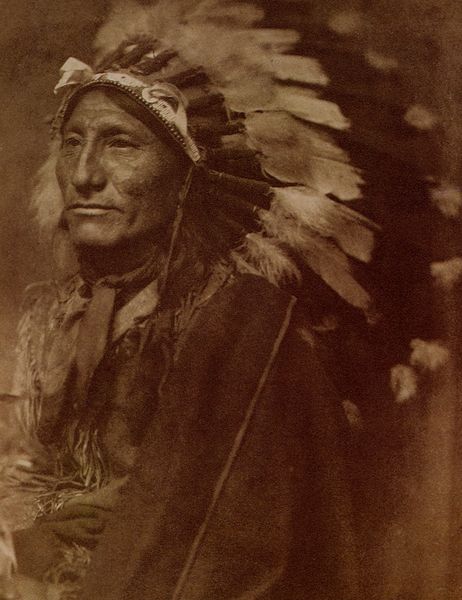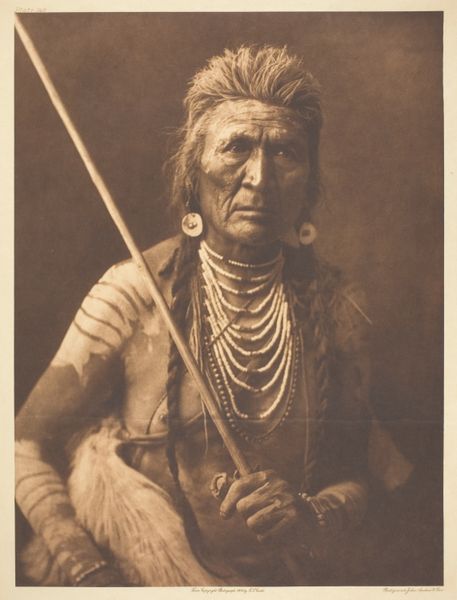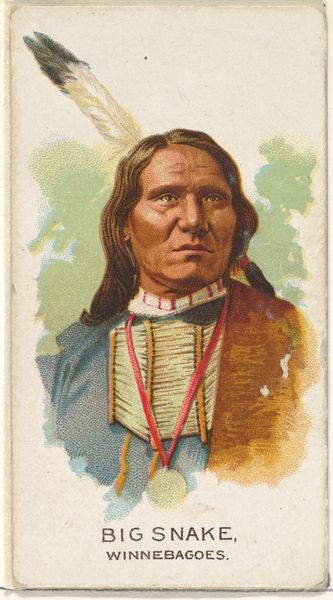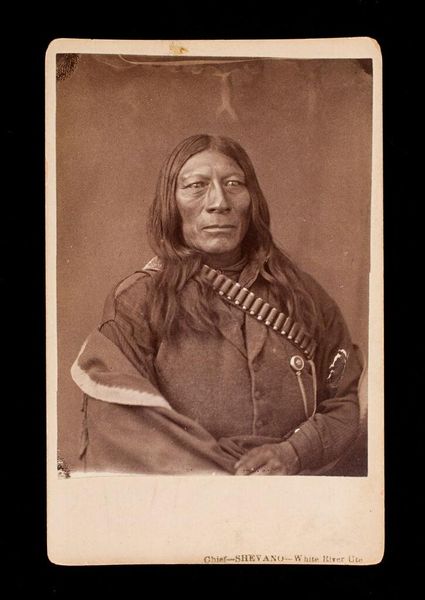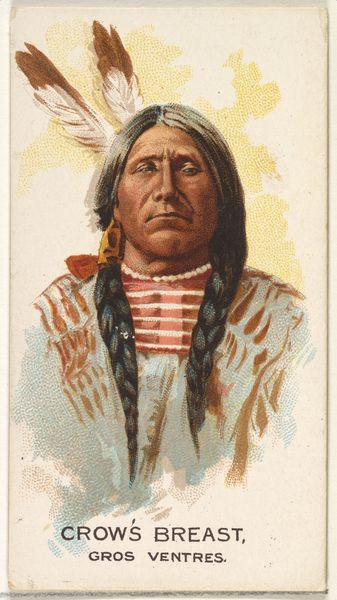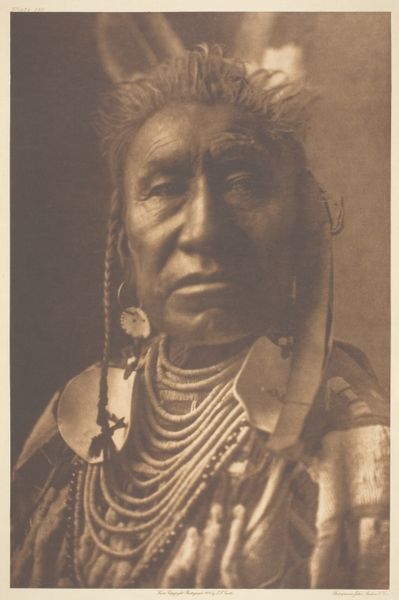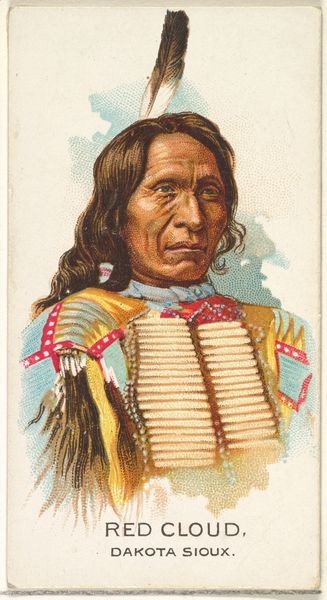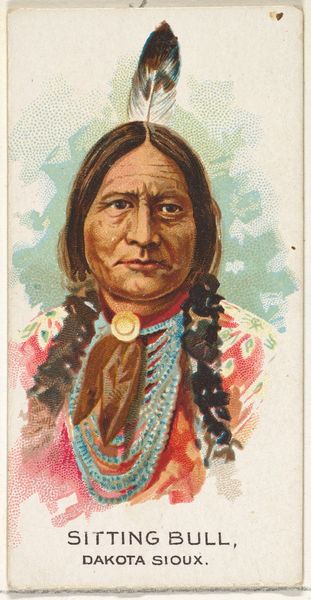
photography, gelatin-silver-print
#
portrait
#
pictorialism
#
photography
#
portrait reference
#
gelatin-silver-print
Dimensions: 39 × 27.9 cm (image/paper); 55.8 × 46.3 cm (mount)
Copyright: Public Domain
Curator: Here we have Edward S. Curtis's 1910 photograph, "New Chest-Piegan," currently housed at the Art Institute of Chicago. Editor: It's immediately striking how somber and imposing the subject appears. The sepia tone adds to the gravity, creating a timeless feel, almost as if it isn’t just a depiction but a record of something deeply rooted. Curator: Curtis dedicated much of his career to documenting Indigenous peoples of North America, specifically during a period of immense cultural disruption. His project, while significant, is now viewed critically for its constructed imagery and romanticized vision of Native life. Editor: You're right, there’s definitely a studied softness, what’s often categorized as Pictorialism, where the sharp detail of a standard photograph is eschewed for a more painterly effect. Look at the texture, and how the focus softens around the edges, pushing our eye toward the central figure's expression. Curator: That softening also underscores a critical tension in Curtis’ work: while purporting to document accurately, he staged and manipulated photographs, often removing modern objects and requesting traditional clothing. We have to ask ourselves, who is this photograph really for? What narratives is it upholding, and at whose expense? Editor: Fair point. But technique and artistic intent aside, his face possesses a monumental stoicism. Notice how Curtis positioned his model. With a firm, upturned gaze and with such close framing we become almost confrontational with him. And his braids, draped over his shoulders, further lend the man a tangible depth that almost invites introspection and interpretation, despite all we know now. Curator: Exactly. That supposed stoicism is loaded. What does it mean to perform strength when your culture is under attack? What other emotions might be present that we, as viewers from a different time and social location, might be missing? Curtis' work requires careful engagement, one where we acknowledge its troubled legacy while recognizing the presence and resilience of the individual portrayed. Editor: Well said, curator. Considering the image's historical and aesthetic implications, Curtis crafted not only a picture but an enduring composition of light, shadow, and human dignity. A picture of its time. Curator: Indeed. Thinking critically allows for a better comprehension, not just about what we see, but what remains unseen and unspoken, providing opportunities to examine both ourselves and this complicated image in a new light.
Comments
No comments
Be the first to comment and join the conversation on the ultimate creative platform.

